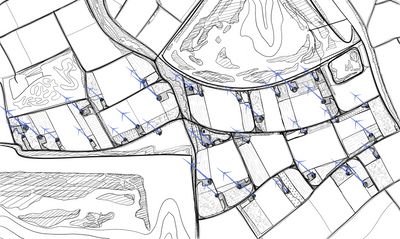Energy and WindBeyond the Monotony of a Productive LandscapeMario Bieri, Jérome Ammann, and Salome Roggensinger

Large scale landscape transformations in the form of gigantic open pit mines defined the territory of the “Rheinische Revier” in the last century in order to satisfy Germany’s energy needs. As fossil energy carriers like brown coal are phased out in favour of new, sustainable ways to generate energy, the region is facing a paradigm shift not only in terms of energy production, but also in regard to the territory. The holes and recultivated surfaces left behind by RWEs excavators are gigantic in scale, but there is precedent for dealing with the aftermath of mining operations.
The wind park however, though not foreign to the region, is a relatively new and so far undesigned typology of energy infrastructure. The turbines dot the landscape according to planning regulations and zoning laws with no overarching design principle. Combined with the big scale industrial agriculture that occupies the ground in-between, the whole landscape becomes space for production and is left uninhabitable for both humans and animals. Is it possible to reimagine the way wind parks relate to the territory and transform them from necessary infrastructure into diverse, urbanised spaces?